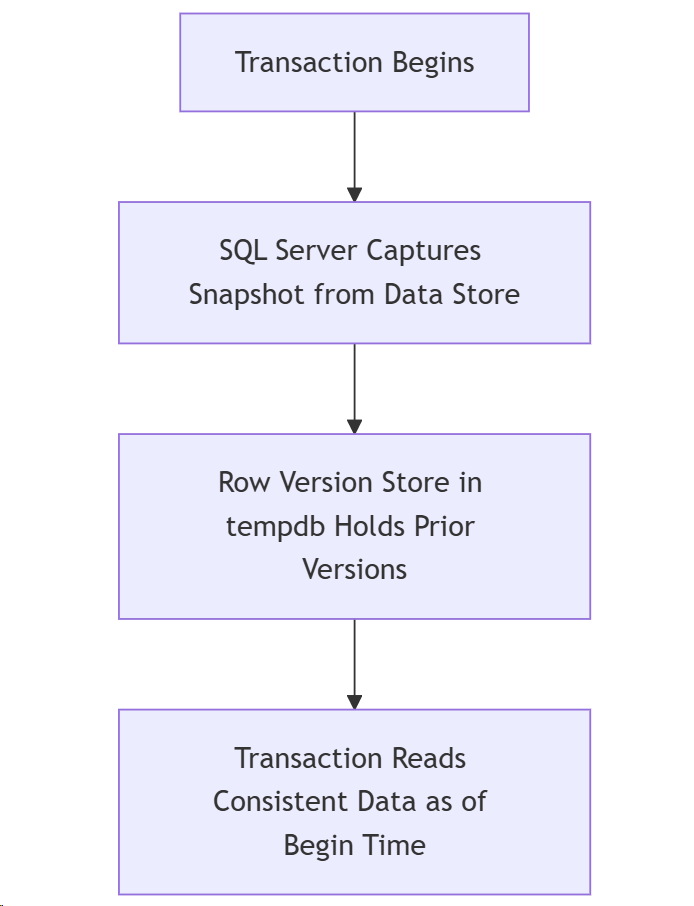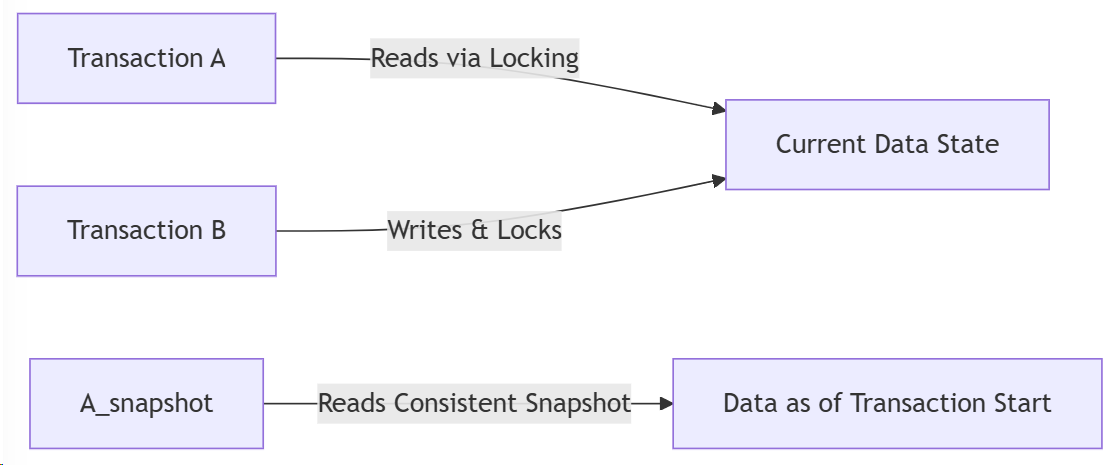In today’s data-intensive environment, optimizing transaction concurrency while maintaining data consistency is critical. Snapshot isolation is a powerful feature in SQL Server that provides a consistent view of the data without using traditional locking mechanisms. This blog post explains the concept, how it works, how to enable it, and the trade-offs involved.
What Is Snapshot Isolation?
Snapshot isolation allows a transaction to work with a stable, point-in-time view of the data as it existed at the start of the transaction. Instead of acquiring locks on data rows during reads, SQL Server uses a row versioning mechanism. This minimizes blocking and deadlocks, providing a smoother experience in high-concurrency environments.
How Snapshot Isolation Works
When snapshot isolation is enabled, SQL Server maintains previous versions of rows in a row version store that resides in the tempdb database. At the start of a transaction, SQL Server creates a “snapshot” of the committed data. Any changes made by other transactions after that point are not visible to the snapshot transaction. This behavior is ideal for read-heavy workloads and scenarios where minimizing blocking is essential.Below is a simplified diagram illustrating the snapshot isolation process:

Enabling Snapshot Isolation in SQL Server
To leverage snapshot isolation, you must enable it at the database level. SQL Server supports two related settings:
- ALLOW_SNAPSHOT_ISOLATION: This setting allows transactions to explicitly request snapshot isolation.
ALTER DATABASE YourDatabase SET ALLOW_SNAPSHOT_ISOLATION ON;2. READ_COMMITTED_SNAPSHOT: This setting changes the default behavior of the READ COMMITTED isolation level to use row versioning.
ALTER DATABASE YourDatabase SET READ_COMMITTED_SNAPSHOT ON;Note:
• When using explicit snapshot transactions (via SET TRANSACTION ISOLATION LEVEL SNAPSHOT), the application must be designed to handle potential update conflicts.
• Enabling either option has implications on tempdb usage since the row version store grows as active transactions hold prior versions.
Snapshot Isolation vs. Traditional Isolation Levels
- Traditional Read Committed:
Uses locks to ensure data consistency. While this prevents dirty reads, it can cause blocking when multiple transactions compete for the same rows. - Snapshot Isolation:
Avoids locking during reads by using row versions. This reduces blocking but may lead to update conflicts if two transactions modify the same data concurrently.
Transactions that have conflicting changes may be forced to roll back, so robust error handling is essential.
Below is a simplified comparison diagram:

Considerations and Best Practices
- Performance Impact:
While snapshot isolation reduces blocking, it increases the workload ontempdband requires careful monitoring to avoid performance bottlenecks. - Update Conflicts:
Because each transaction works on its own version of the data, write-write conflicts can occur. Applications should be designed to handle these conflicts gracefully using retry logic. - When to Use:
Snapshot isolation is best suited for read-intensive applications or situations where long-running transactions must view a stable dataset without being affected by concurrent updates.
Conclusion
Snapshot isolation in SQL Server is a robust mechanism for improving read consistency and concurrency without traditional locking. By leveraging a row version store in tempdb, it provides developers with a powerful tool to balance data accuracy and performance. However, as with any advanced feature, it is important to understand the trade-offs—especially around tempdb usage and update conflicts—to implement it effectively in your solution architecture.
By understanding and applying snapshot isolation correctly, you can design systems that are both highly concurrent and resilient, ensuring your applications perform optimally even under heavy load.
Discover more from My Tricky Notes
Subscribe to get the latest posts sent to your email.

Excellent way of telling, and nice article to take information about my presentation subject,
which i am going to present in college.